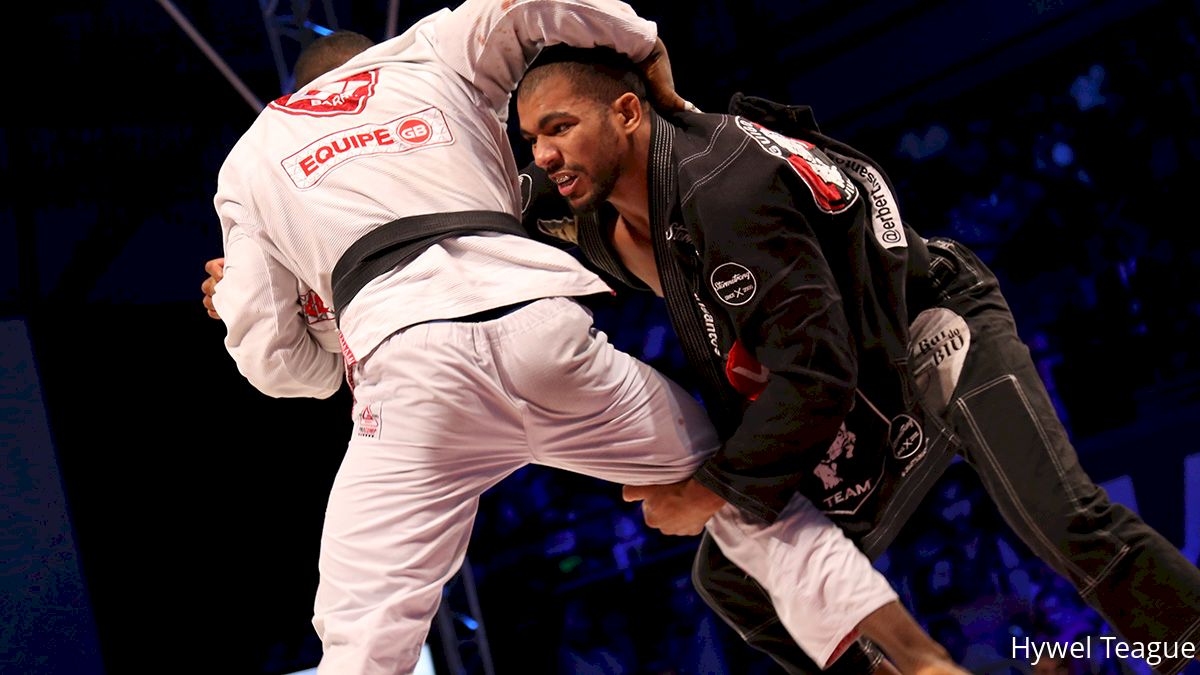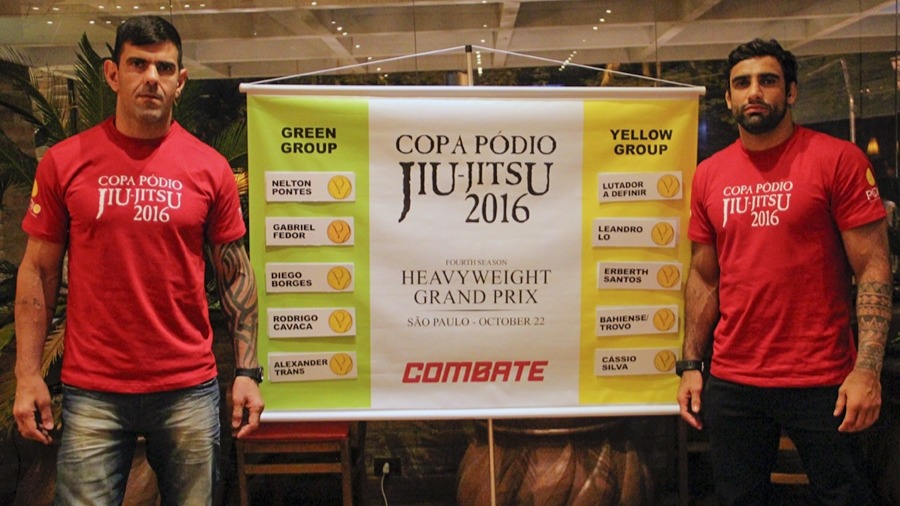Copa Podio Heavyweight GPOct 12, 2016 by Hywel Teague
Why The Copa Podio Grand Prix Format Is A Recipe For Nothing But Excitement
Why The Copa Podio Grand Prix Format Is A Recipe For Nothing But Excitement
With the Copa Podio 2016 Heavyweight Grand Prix rapidly approaching, we look at why the pro show's format is a guaranteed formula for excitement.

With the Copa Podio 2016 Heavyweight Grand Prix rapidly approaching, we look at why the pro show's format is a guaranteed formula for excitement and entertainment when it streams live on FloGrappling from Sao Paulo, Brazil, on October 22.
Copa Podio succeeds in delivering stunning jiu-jitsu mixed with all the great elements we as fans demand from sporting competitions -- emotion, drama, and memorable moments of conquest and defeat.
Taking 10 big names and getting them to fight it out for a grand prize sounds easy enough, but traditional elimination tournaments don't always live up to expectations. Stalling for easy wins, a lack of submissions, or -- even worse -- close outs...they all get in the way of what fans want, which is exciting, entertaining jiu-jitsu.
Copa Podio has created a system that's almost guaranteed to deliver an awesome viewing experience for fans.

There are five rounds of four matches throughout the evening. Matches are six minutes long and use standard federation-style rules.
The competitors gain points based on each of their matches performances: Five points are given for a submission victory, three for winning by points, two for a victory by advantages, and one point goes to each athlete for a draw. The scores are tallied and the competitors placed onto a ranking table that is updated after each round of the Grand Prix.
The top two athletes from each group will advance into the championship rounds, at which time the format switches to single elimination. The semifinals see the winner of Group A fight second place of Group B, and vice versa. The losers of both semifinals also fight for third place.
This means that it's possible to see two competitors who fought in the earlier group stages meet once again in the final, as has happened before in previous Copa Podio Grand Prixs. We saw the most notable example of this happen in 2015 when then-brown belt Victor Honorio beat Felipe Pena in the group stages in a huge upset, only for Pena to avenge the loss by submitting Honorio in the final later that night.

If a grappler wins every match by advantages, while another submits two opponents but draws one and loses another, then the athlete with the most wins may not advance.
With the added pressure to win via the most decisive manner possible, this can greatly affect competitors' strategies going into matches. Down on points on the leaderboard, they may be forced to open up their games and go for submissions to guarantee passage through to the semifinals.
Watch the Copa Podio 2016 Heavyweight Grand Prix LIVE or on-demand on FloGrappling.
Copa Podio succeeds in delivering stunning jiu-jitsu mixed with all the great elements we as fans demand from sporting competitions -- emotion, drama, and memorable moments of conquest and defeat.
Taking 10 big names and getting them to fight it out for a grand prize sounds easy enough, but traditional elimination tournaments don't always live up to expectations. Stalling for easy wins, a lack of submissions, or -- even worse -- close outs...they all get in the way of what fans want, which is exciting, entertaining jiu-jitsu.
Copa Podio has created a system that's almost guaranteed to deliver an awesome viewing experience for fans.

Copa Podio 2016 Heavyweight Grand Prix competitors
| Green Group |
Yellow Group |
|---|---|
| Nelton Pontes |
Leandro Lo |
| Gabriel "Fedor" Lucas |
Erberth Santos |
| Diego Borges |
Cassio Silva |
| Rodrigo Cavaca |
Isaque Bahiense / Fellipe Trovo |
| Alexander Trans |
TBA |
How the GP system works
With 10 fighters split into two groups, Copa Podio uses a round-robin system that sees an athlete matched with everybody else in his group.There are five rounds of four matches throughout the evening. Matches are six minutes long and use standard federation-style rules.
The competitors gain points based on each of their matches performances: Five points are given for a submission victory, three for winning by points, two for a victory by advantages, and one point goes to each athlete for a draw. The scores are tallied and the competitors placed onto a ranking table that is updated after each round of the Grand Prix.
The top two athletes from each group will advance into the championship rounds, at which time the format switches to single elimination. The semifinals see the winner of Group A fight second place of Group B, and vice versa. The losers of both semifinals also fight for third place.
This means that it's possible to see two competitors who fought in the earlier group stages meet once again in the final, as has happened before in previous Copa Podio Grand Prixs. We saw the most notable example of this happen in 2015 when then-brown belt Victor Honorio beat Felipe Pena in the group stages in a huge upset, only for Pena to avenge the loss by submitting Honorio in the final later that night.

A Hard-Fought Victory
To win a Copa Podio Grand Prix, a competitor must win six straight matches against world-class opponents. That means a possible 36 minutes of high-paced matches with pressure to win in such a fashion that guarantees your advancement to the championship rounds.If a grappler wins every match by advantages, while another submits two opponents but draws one and loses another, then the athlete with the most wins may not advance.
With the added pressure to win via the most decisive manner possible, this can greatly affect competitors' strategies going into matches. Down on points on the leaderboard, they may be forced to open up their games and go for submissions to guarantee passage through to the semifinals.
The recipe for excitement and entertainment
With a stacked line-up of tough competitors and a format that makes it incredibly difficult to predict how the tournament will play out, the Copa Podio 2016 Heavyweight Grand Prix looks set to be one of the most explosive events of the year.Watch the Copa Podio 2016 Heavyweight Grand Prix LIVE or on-demand on FloGrappling.